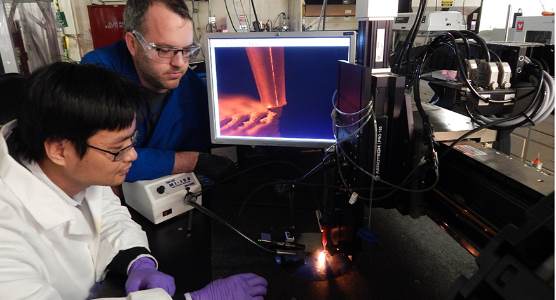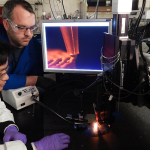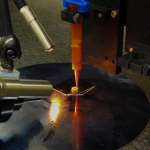3D printers could be used to change the dynamic behavior of reactive composite materials.
That’s the potentially-groundbreaking news that a team of scientists and engineers from Lawrence Livermore National Laboratory and Harvard University have discovered, publishing their findings in the December issue of the Advanced Materials journal, released Wednesday, as reported by Phys.org.
With 3D printing, the scientists and engineers have pinpointed that the architecture can pave the way for exerting more control over the energy release rate of reactive composites.
“3D printing has allowed us to make high-quality parts with the feature sizes commensurate with the length scales of dynamic phenomena,” Kyle Sullivan, a staff scientist and the paper’s lead author, told Phys.org. “It’s allowed us to make precision geometries, with careful control over several length scales. With this spatial control, we wanted to examine how, and to what extent, this translates into controlling dynamic behavior.”
Sullivan added: “The big message here is we’re showing 3D printing can be used to change the dynamic behavior of materials. It’s very promising moving forward.”
Prior to this discovery, the way to change the performance in reactive materials was to change their formulation or the formulation’s particle size.
With direct ink-writing, a 3D printing process, researchers were able to change the energy in reactive materials like never before.
It will be intriguing to see what developers can do now that they know that 3D printers are able to change reactive materials.
Photo 1’s caption: Lawrence Livermore Laboratory scientists Cheng Zhu (left) and Kyle Sullivan are using additive manufacturing for printing custom electrically conductive substrates.
Credit: Julie Russell/Eric Duoss LLNL
Photo 2’s caption: The researchers found by creating the reactive material architectures, or RMAs, they could direct and manipulate the energy released by the material in ways never possible before. Credit: Julie Russell/Eric Duoss LLNL













